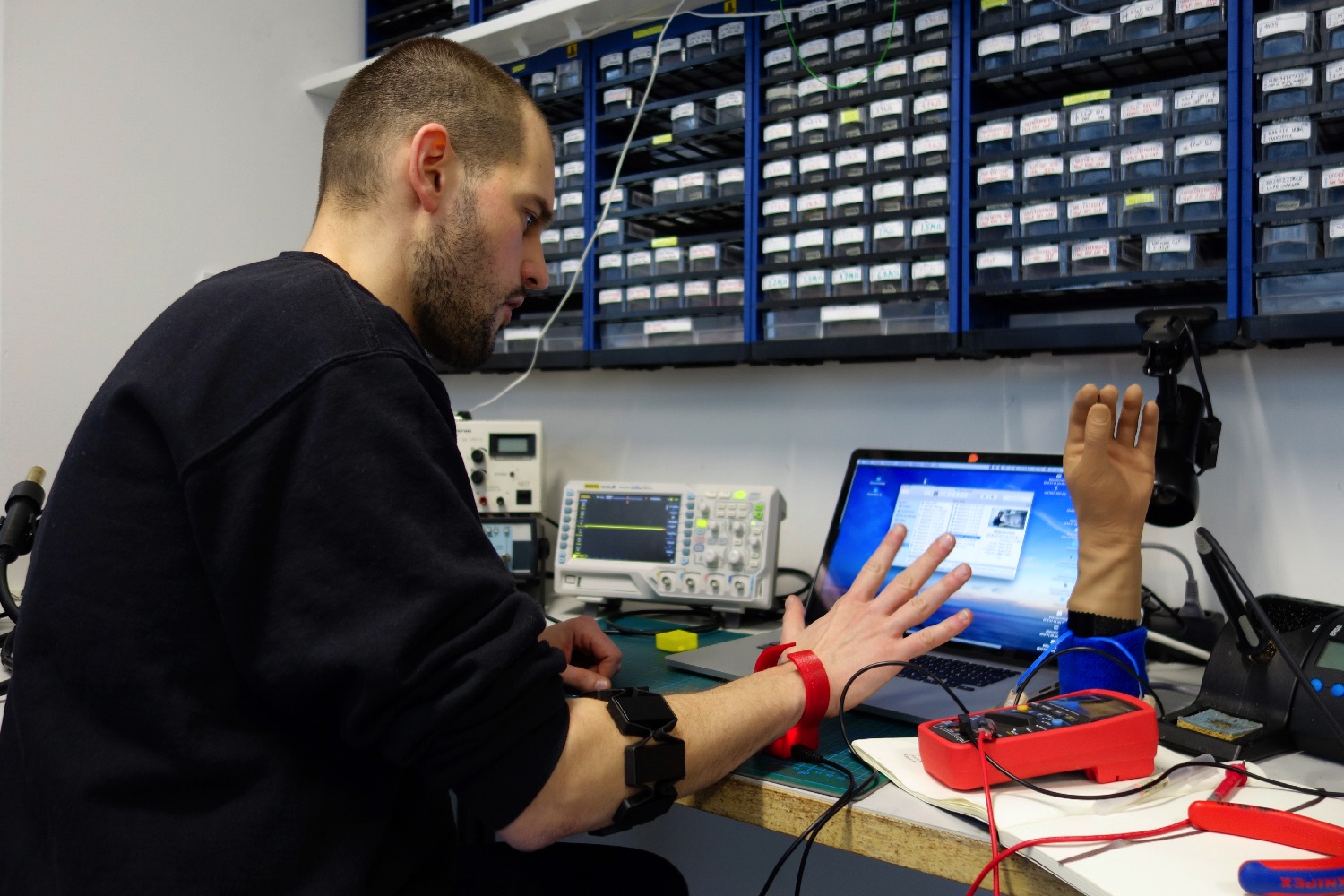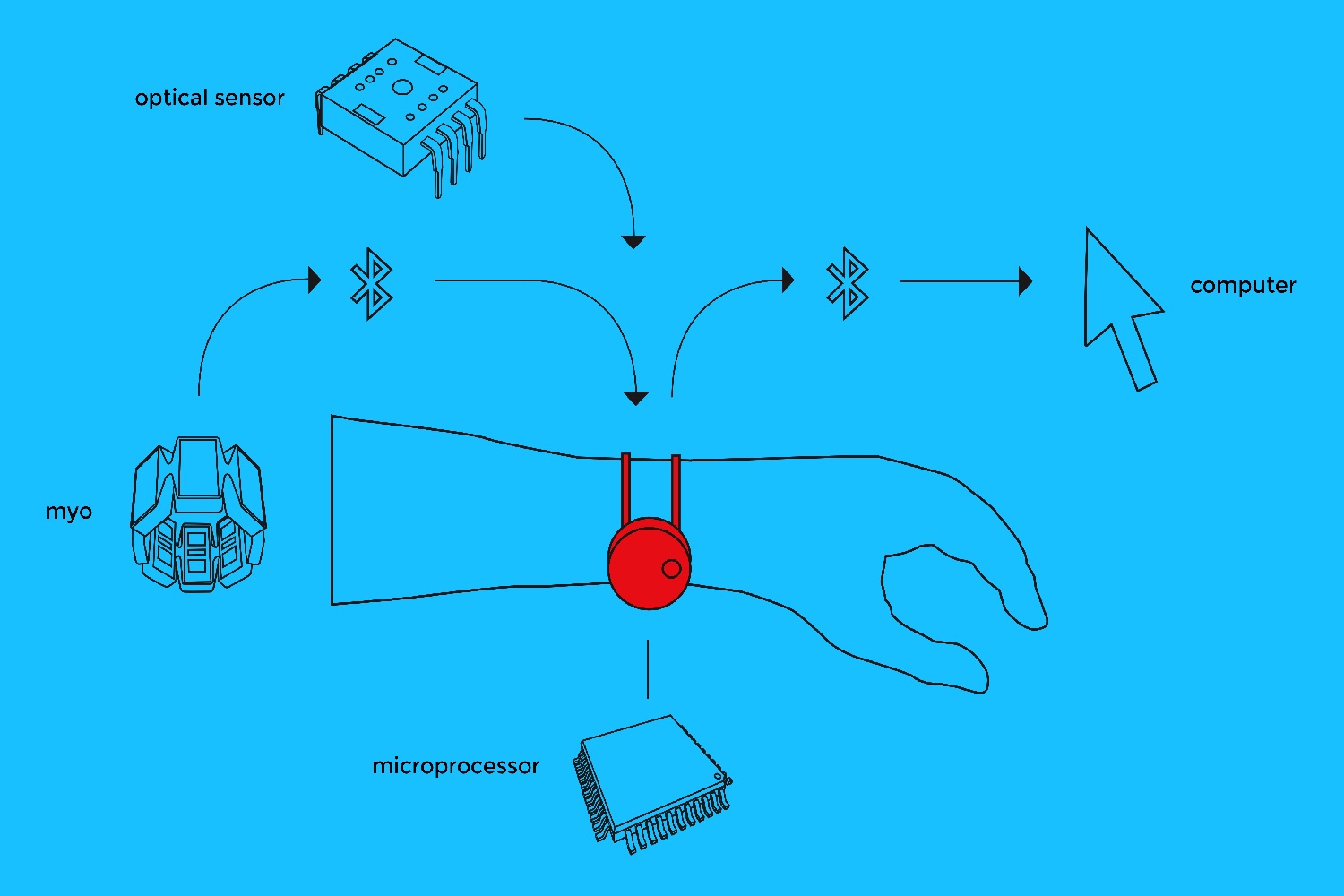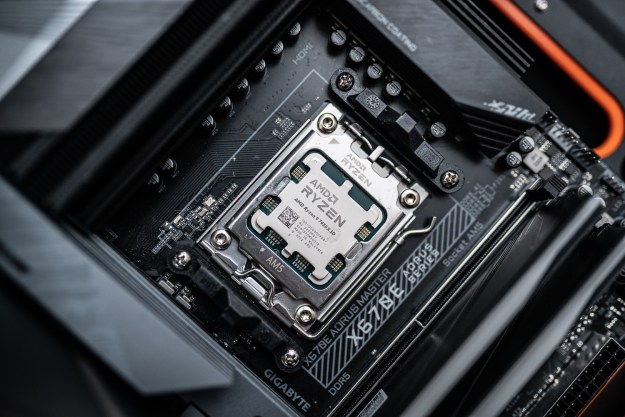But for disabled users — and, more specifically, for amputees without the use of their hand — this simple interface element is easier said than done. That is where the work of three German design students, Lucas Rex, David Kaltenbach and Maximilian Mahal, comes in.
As students of Berlin Weissensee School of Art , they created a 3D-printed smart wristband which works in conjunction with hand prostheses as a substitute mouse.
“In our research we found out that a big problem for hand amputees is using computers,” Rex told Digital Trends. “That becomes even more significant when you consider that the majority of hand amputees lose their hands in accidents involving heavy machinery. After that, they have to be re-educated to do office jobs, which invariably means using computers. While prosthetics have come a long way, they’re still far from resembling an organic hand — which is what 90 percent of computer interfaces are designed for.”
Called Shortcut, the technology the team developed is built on the phenomenon sometimes referred to as “phantom limbs,” referring to the the sensation that an amputated or missing limb is still attached to a person. People who have lost hands are still able to make movements such as raising a hand or pointing, even though the hand is no longer there. Shortcut uses smart sensors to create an interface using these still-functioning muscle signals: translating phantom hand gestures and planar movements into interface controls, which allow for everything from pointing and clicking to scrolling through a page.
“In the ideation phase of the project, we tried various different approaches to try and solve this problem,” Rex said “We tried speech recognition, we tried face tracking and blinking as a substitute for pointing and clicking, we tried a control mechanism with the foot. For many different reasons, we decided to go with this idea because it builds on what people are used to.”
Right now, Shortcut is still in the prototyping phase, though there are plenty of directions it could go in from here. “[The] next step will be a third iteration of a working prototype,” Rex said. “With that, we want to go into usability testing with hand amputees, so we can fine-tune the details and evaluate what further steps might make sense.”
That might include licensing the technology or launching it as its own Kickstarter — or even making the difficult decision to take what they have learned and move onto a different project.
“To be honest we don’t yet know for for sure which option makes most sense, [but] the user testing will be an important help for deciding these things,” Rex said.
Editors' Recommendations
- 4 CPUs you should buy instead of the Ryzen 7 7800X3D
- Nvidia turns simple text prompts into game-ready 3D models
- Glasses-free 3D gaming can be amazing — but only if it’s done right
- YouTuber claims that this ugly 3D-printed mouse is actually the best for gaming
- AMD’s upcoming Ryzen 5 5600X3D could completely dethrone Intel in budget builds







